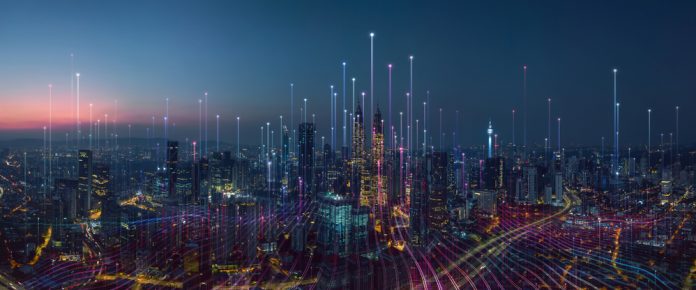More than resources and technology, it is the capacity to adapt that makes a city smart, writes Sandeep Suri
You may have heard the term ‘Smart Cities’, often used by our political leaders, media, and local authorities. It is usually quite a familiar term with people who toil in a few selected fields in the urban landscape. Still, on the other hand, it could be employed in multiple ways and could risk becoming an empty slogan due to its overuse.
Rapid urbanisation is putting tremendous pressure on the administration to offer the best public services to its citizens. It presents a challenge for cities to provide environmental sustainability and ensure residents’ physical security and safety. Most thriving cities seek sustainable growth along with innovative solutions.
So, let us understand some of the features that make a smart city really ‘smart’! The ever-increasing focus on technology is the critical differentiator that makes these cities’ efficient’. Thus, a Smart city could turn waste into energy, have driverless cars, give ‘early warnings’ on drainage overflow, prompt you to go to your favourite mall when the fresh stock of your favourite doughnuts arrives, and many more.
Most smart cities focus on infrastructure coupled with big data and Information technology used to manage better urban assets such as public transit, wastewater management systems, roads, etc. The term smart typically denotes physical assets connected to the Internet of Things via sensor technology, generating valuable data streams: intelligent parking meters, smart streetlights. A smart city uses technology to provide services and solve the challenges the city is facing. Say, for example, a smart city could resolve the transportation and accessibility issues, improve social services, help build sustainability, and so on. It is usually developed keeping in mind the ‘well-being’ of its citizens.

Now that we have the background, let us see what it means. By installing sensors in the streets that identify empty parking slots, proactively inform the motorists about traffic jams, offer an estimated time to public commuters, promptly getting an ambulance in case of an emergency, measure air, and water quality. The sensors could reduce the amount of street lighting when there aren’t any people around and thus save electricity. A smart city uses GPS sensors to improve the urgent medical needs of its citizens. Even the traffic lights detect ambulances and urgent needs of any vehicular traffic. Emergency services can manoeuvre more smoothly throughout the city and avoid any traffic mess! Using the data, the citizens can send information about broken potholes, malfunctioning streetlights, overflowing dustbins, broken sewage, etc. That way, the authorities can send out a team to fix the issue as soon as it is spotted. The data collected on a real-time basis about all kinds of things like traffic, water, air quality, and solar radiation. With this information, the government can be on ‘its feet’ to solve nearly any problem in real time by maximising social inclusion.
Smart cities offer an unparalleled combination of data and digital technology to make better decisions and improve the quality of life. More comprehensive, real-time data explains how demand patterns are changing and responds promptly and appropriately.

Some cities have the edge over others in starting their transformational journey with some inherent advantages – deep pockets, lower per-capita population density, and willingness to invest in high-touch technologies. But even places that lack this support can set themselves apart with the vision to innovate and adapt, good management, and a relentless commitment to meeting the needs of residents. In such cases, I would argue that their canvas has a lot of blank space to innovate to bring new technology on board. In addition, the opportunities to engage with the citizens are immense. Individuals should be empowered to shape the future of the cities they call home.
Smart cities across the globe are at the crossroads where cutting-edge technology and urban planning would have to co-exist, supporting each other to make it more profound.
The bottom line is that Innovative adaptation helps smart cities and model them as evolving organisms that must respond to challenges the environment presents. Smart cities created by their CITIZENS produce better outcomes for their CITIZENS! It is the capacity to adapt that makes a city smart, not so much a particular set of resources that it can deploy to do so. Let us not forget that natural adaptation requires a degree of sustainability. After all, it is the COLLECTIVE INTELLIGENCE that leads to COLLECTIVE WISDOM.








